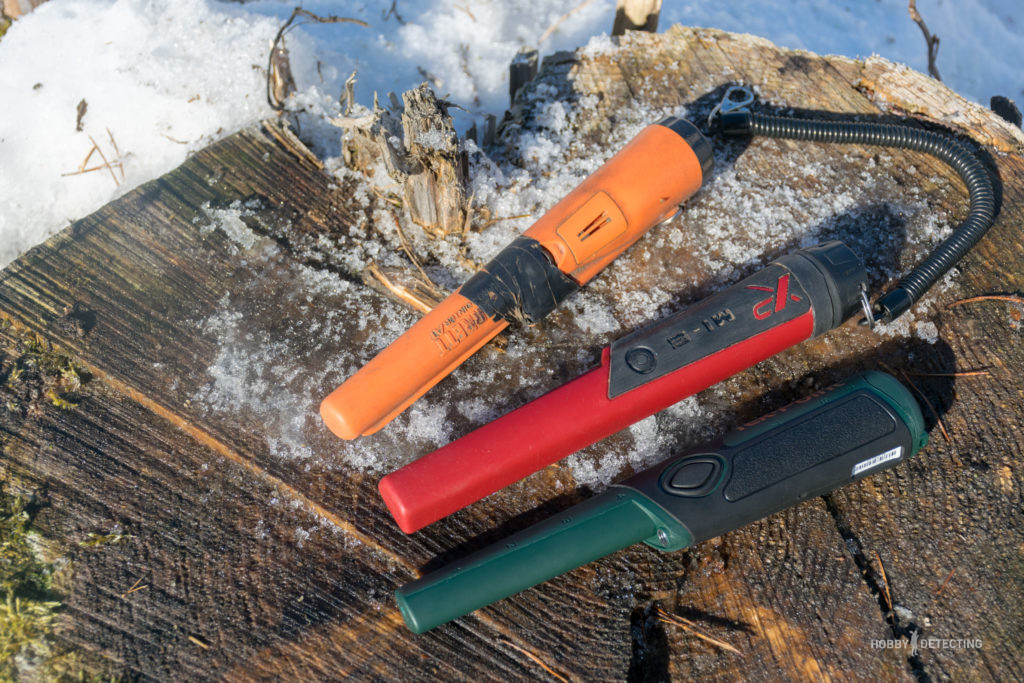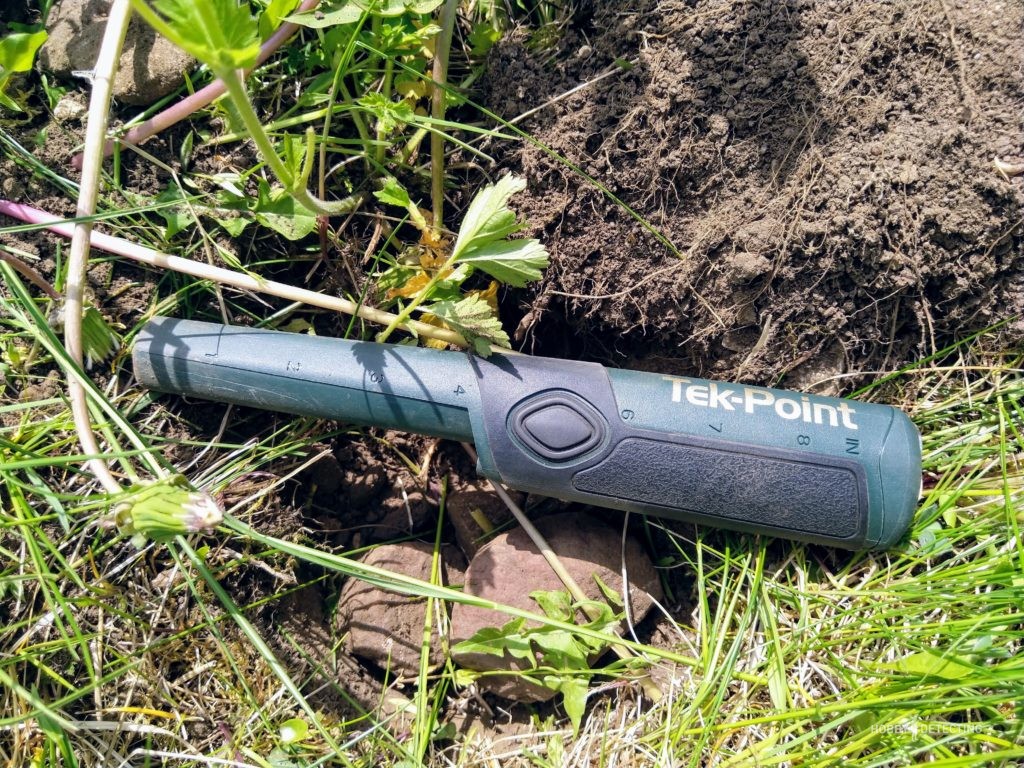Teknetics Tek-Point – our review! (photos, tips, settings+)
Welcome, friends, to our cozy blog! As usual, a fresh review of a very fresh and new product, namely the pinpointer! At the moment, there are so many pinpointers on the metal detector and search equipment market that sometimes you don’t even know how one differs from the other and which one should you choose for your next purchase? A pinpointer is partly the same consumable for a cop; I have repeatedly seen how some comrades “killed” their pinpointers over months and a year of searching, which is quite surprising, because in my 4 years of using a pinpointer (before that I dug without a pin, drove palm in front of the coil), I have never broken a single one and my first pinpointer is still in excellent condition and makes me happy!
Yes, there are a lot of pinpointers now, it’s impossible to write reviews for them all, but there are two pinpointers that I really liked and they came out this year – at the beginning of 2018. These are Fisher F-Pulse and Teknetics Tek-Point. They differ only in colors, so today we will only talk about Teknetics Tek-Point.
Design and characteristics
Содержание статьи:

The pinpointer from Teknetics is supplied in a cardboard box with interesting internal contents. The kit includes a manual and a case with a pin, without a trench coat (so it can’t be lost). I wonder why there is no trench – the question is more likely for Teknetics, but do not forget that pins from Garrett also come without a trench.

The pin itself is of a very standard design. Batteries (2 AA – AA batteries) are inserted through the cover, which must be unscrewed with a screwdriver or coin, this is done to ensure water resistance, because the pinpointer can be immersed to a depth of 2 meters and kept at this depth for no more than 1 hour. The button is in the middle, the handle is made of a special, rubberized plastic that does not slip out of your hands and is held firmly in bare hands or with gloves.

The Teknetics pinpointer is almost a centimeter longer in length than the Garrett pinpointer (“Carrot”), and is the same in length as the XP MI6. During operation, I did not notice any particular difference in length, so there is nothing to say about this. A little longer is good, it will go deeper into the hole, simple logic! 🙂

There is a ruler on the body of the pinpointer – on one side in inches, and on the other side in centimeters, thereby it will be convenient to measure from what depth the find was lifted.
Several times comrades at the mine asked about the quality of the plastic and how durable this pin is. An interesting question, no doubt! The thing is that the pinpointer may look a little flimsy in appearance (in my opinion, it doesn’t), but the plastic is really strong. The nose, the button, and the plastic of the battery compartment and speaker are strong. From time to time I try to dig up a find with the nose of a pin, and it can withstand such abuse easily – you need to dig up with a shovel, not a pin, cut it on the nose. 🙂

Now to the most important thing that distinguishes this pin from others – it is an impulse, an eddy current pinpointer. The advantages of pulse metal detectors include low sensitivity to mineralized soil and salt water, the disadvantages are poor selectivity by type of metal and relatively high energy consumption. As for the last one – two AA batteries last for about 20 hours, I use batteries and always charge them at home after digging, so I never had time to put them down. When working with soil – very often, when you turn on the pinpointer and bring it to the hole, it starts to emit false signals, this mainly happens when the maximum sensitivity is set. This can be easily resolved. In general, any false signals can be resolved very simply in this pinpointer – with one short press of the button. You just press a button, calibrate the pin to soil/water/sand and you can dig up a small target. I checked it everywhere – and even at sea in the salty sand, the pinpointer works better than all other pins and it’s true!

Metal type selectivity is not required for a pinpointer, because it is a pin and not a ground metal detector. With a pinpointer, our task is to quickly find a small target in the ground and Tek-Point copes with this perfectly. Why don't others produce pulse pinpointers? The simplicity and at the same time complexity of this task – making a pulse pinpointer compact requires very serious work and design, First Texas Products was able to do this, the rest are not yet very good, judging by the developments of other companies. In any case, this is good news for us diggers. For those looking for gold on the beach, this is a must!

The scanning area at the pinpointer nose is 360 degrees, that is, it scans over the entire area of the nose.
What else can this pinpointer do?
Naturally, it switches search modes . There are three sensitivity modes – minimum, medium and full sensitivity. And three additional voice levels: vibration, response, vibration+response. It is switched by long pressing the button (entered the sensitivity menu) and then clicking each time, by the response and the number of responses it is clear what level of sensitivity and what response you are choosing.
Builds up from the ground . I already wrote about this above – a short and simple press of the button and you have already built up your pinpointer from most interference.
Frequency shift . Yes, you heard right. Using a frequency shift, you can remove false signals emitted by the metal detector when the pinpointer is operating. Very often the metal detector did not work well with another pin and the device had to be placed away from the pit and the pinpointer, but still the background noise and unstable operation of the device made me a little mad. With Tek-Point you can now forget about this. To do this, you need to press the pinpointer button and hold it until two signals pass! Mandatory – the button cannot be released. After two long signals, you can press the button and select the quietest frequency detuning channel by pressing, there are only 16 channels, so there is plenty to choose from. You will immediately understand the quietest channel – your metal detector will simply be silent and that’s it.
Anti-lost function . If you left the pinpointer next to the hole and left, then after five minutes of activity the pinpointer will start beeping and the LED will blink. A signal is sent every 15 seconds, the pinpointer will automatically switch to low power consumption mode and you can easily find it on the field using this signal. But it’s better to buy a trench coat and attach the pinpointer to your belt, bag or case with the trench coat, so there is less chance that you will lose or leave the pinpointer, and it will be more difficult for it to fall out.

The Tek-Point pinpointer, according to its characteristics, is currently one of the deepest pinpointers on the metal detector market. Yes, the depth for a pinpointer is not very important, but sometimes it helps, for example, if you have found a target and haven’t started digging yet, but you understand that the target is shallow, then you can call it with a pinpointer and use a scoop or digging tool to pull it out easily and neatly from the ground. This is especially true in beach searches, where, generally, targets are located shallow on the surface.
In the video above, much of what I told is demonstrated in working order, so you can listen and see how the pinpointer works in advance.
At the moment, I always go digging with this pinpointer, so this pinpointer appears in further photos and reports on digging, and this is not surprising – I am very pleased with this pin and for now I am not going to change it to something else!
No worries, friends!
